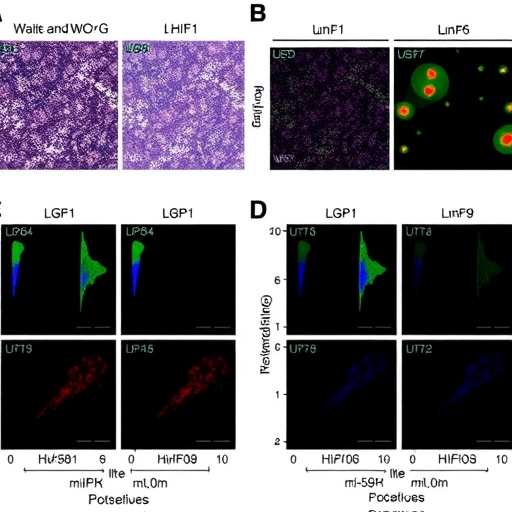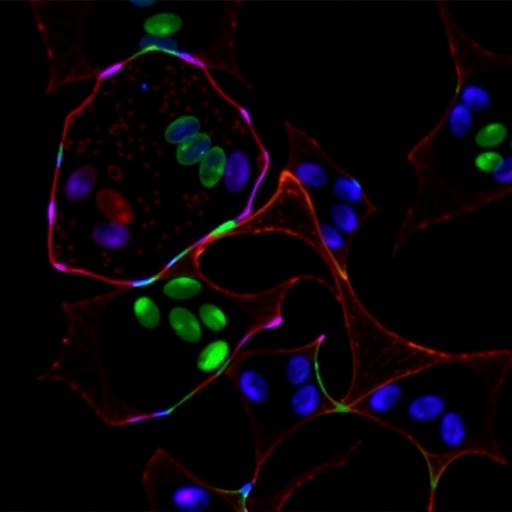PROTECT YOUR DNA WITH QUANTUM TECHNOLOGY
Orgo-Life the new way to the future Advertising by AdpathwayIn recent years, the intersection of nutrition and aging has gained significant attention in the field of gerontology, especially concerning how dietary patterns influence the functional abilities of older adults. A groundbreaking longitudinal study orchestrated by Huang, Liu, and Wang et al. offers compelling evidence on the relationship between dietary diversity and disability in activities of daily living (ADLs) among older Chinese populations. This research sheds light on an essential aspect of elder care, highlighting how what older adults eat may critically determine their independence and quality of life.
Dietary diversity is a multifaceted concept that goes beyond merely consuming various foods; it encompasses the role that different food groups play in fulfilling comprehensive nutritional needs. In the context of aging, where metabolic and physiological changes complicate nutrient absorption and utilization, the significance of a diverse diet becomes even more pronounced. This study underscores that a varied diet contributes to various health outcomes, potentially reducing the risks associated with both chronic diseases and functional decline in the elderly.
The investigators focused on a sample of older Chinese individuals, exploring how their dietary intake impacted their ability to perform ADLs. Activities of daily living are fundamental tasks that are crucial for maintaining autonomy, such as bathing, dressing, eating, and moving around. The loss of these abilities not only signifies a decline in health but also poses emotional and psychological challenges that can lead to increased dependency on caregivers and diminished life satisfaction. Thus, understanding the variables that influence these capabilities can have profound implications for public health policy and elder care practices.
Utilizing a longitudinal study design allowed the researchers to track changes over time, honing in on individual dietary habits and their corresponding effects on overall health outcomes. By collecting data at multiple points, the study mitigated the limitations of cross-sectional analyses, affording a clearer picture of how diet impacts functional decline as individuals age. Such a robust methodology bolsters the credibility and applicability of the findings, making them more relevant to practitioners and policymakers alike.
The research conducted by Huang and colleagues reveals a clear association between dietary diversity and the ability to perform daily activities. Older adults who reported higher levels of dietary diversity were less likely to experience decline in their functional capabilities over time. This finding aligns with existing literature that suggests a well-rounded diet, rich in various micronutrients and macronutrients, can bolster both physical and cognitive function among aging individuals. These findings prompt a re-evaluation of dietary recommendations for older adults, emphasizing quality and variety rather than merely caloric intake.
One notable insight from the study was the critical role of specific food groups, which are often underrepresented in the diets of many older adults. For instance, fruits, vegetables, whole grains, and protein-rich foods were highlighted as essential components of a diverse diet. Each of these food categories contributes differently to the body’s needs, offering unique vitamins, minerals, and antioxidants that synergistically work to promote overall health. The study suggests that an abundance of such foods may prevent nutrient deficiencies commonly observed in aging populations.
Moreover, the psychological implications of dietary diversity should not be overlooked. Eating a varied diet may also promote enjoyment and satisfaction, transforming mealtimes into opportunities for social engagement and bonding among family and peers. This social aspect of eating is vital, given that loneliness and isolation can exacerbate health issues in older adults. Engaging in diverse culinary experiences can provide both nutritional and psychological benefits, contributing to a higher quality of life.
The implications of these findings extend beyond individual health and touch upon public health initiatives. As countries like China navigate the challenges posed by rapidly aging populations, effective nutritional strategies become paramount. By advocating for dietary diversity, public health campaigns could encourage older adults to adopt healthier eating patterns that promote longevity and vitality. Simple interventions, such as community workshops focused on cooking with diverse ingredients, could have far-reaching impacts on the health of older adults.
Furthermore, healthcare providers must recognize the importance of incorporating dietary assessments into regular health evaluations for elderly patients. Tailored nutritional plans that consider individual preferences as well as cultural and societal factors can enhance adherence to dietary recommendations. Such person-centered approaches not only boost dietary diversity but also help establish a positive relationship between older adults and their food, cultivating habits that foster independence and well-being.
In light of the findings from Huang and colleagues, families and caregivers should be encouraged to take an active role in promoting dietary diversity among older adults. Understanding how to prepare meals that include a range of foods can be both rewarding and beneficial. By prioritizing nutrition, families contribute significantly to the health and happiness of their elderly relatives, potentially delaying or preventing functional decline and the onset of degenerative health issues.
As we delve into the implications of this research, it is also essential to recognize the barriers that some older adults face in achieving dietary diversity. Economic constraints, limited mobility, and inadequate access to fresh foods are all factors that can impede a well-rounded diet. Addressing these challenges will require multifaceted solutions involving cooperation between various sectors, including healthcare providers, community organizations, and local governments.
The need for further research is evident as we advance our understanding of the relationship between diet and aging. Longitudinal studies, like the one conducted by Huang et al., serve as stepping stones toward developing interventions that could revolutionize elder care. Tracking other potential variables, such as social factors and mental health, could provide a more holistic view of how these elements interplay in the lives of older adults.
The findings from this pivotal research open the door to a broader conversation about nutrition and aging. In recognizing the vital role that dietary diversity plays in preserving the independence of older adults, we can make strides toward fostering healthier aging practices worldwide. The potential to empower older adults through better diet choices is not just an academic exercise; it’s a commitment to improving quality of life and ensuring that aging individuals can enjoy their golden years with dignity and autonomy.
In summary, the association between dietary diversity and disability in activities of daily living among older Chinese individuals presents an intricate tapestry woven with various health, social, and psychological layers. As this research highlights, dietary diversity emerges as not merely a recommendation but as a necessity in promoting health among aging populations. Its implications reverberate across individual lives and through the healthcare system, paving the way for innovative strategies aimed at enhancing the well-being of older adults worldwide.
Subject of Research: Association of dietary diversity with disability in activities of daily living among older Chinese people.
Article Title: Association of dietary diversity with disability in activities of daily living among older Chinese people: a longitudinal study.
Article References: Huang, L., Liu, Z., Wang, W. et al. Association of dietary diversity with disability in activities of daily living among older Chinese people: a longitudinal study. BMC Geriatr 25, 770 (2025). https://doi.org/10.1186/s12877-025-06397-4
Image Credits: AI Generated
DOI: 10.1186/s12877-025-06397-4
Keywords: dietary diversity, activities of daily living, older adults, aging, nutrition, China, longitudinal study, independence in aging, functional decline, public health, elder care.
Tags: activities of daily living in elderlychronic disease prevention through dietdietary diversity in older adultselder care and nutritionfunctional abilities of older adultsgerontology and nutritionhealth outcomes of diverse dietsimpact of diet on quality of lifeindependence in older Chinese populationslongitudinal study on aging and dietnutrition and aging researchnutritional needs of aging populations


 3 hours ago
14
3 hours ago
14





















 English (US) ·
English (US) ·  French (CA) ·
French (CA) ·